LTL’s Breakdown of 15 World Heritage Sites in China
Did you know that there are an unbelievable 55 listed UNESCO World Heritage Sites in China!
This makes China rank top in the world along with Italy which also has 55
However, with new listings being added as recently as 2019 and a long tentative list, they could be set to overtake Italy at any moment.
World Heritage Sites – 世界文化遗产地 shìjiè wénhuà yíchǎndì
We’ve picked out our favourite 15 World Heritage Sites in China and you can also find a full list of all 55 at the end of this blog.
UNESCO World Heritage Sites are categorised as either Cultural, Natural or both Cultural and Natural. With some truly stunning landscapes in China along with lots of historically important sites, China has a mixture of all three.
World Heritage Sites in China – Cultural
World Heritage Sites in China – Natural
World Heritage Sites in China – Cultural and Natural
World Heritage Sites in China – Full List
World Heritage Sites in China – Cultural 🏯
The Great Wall
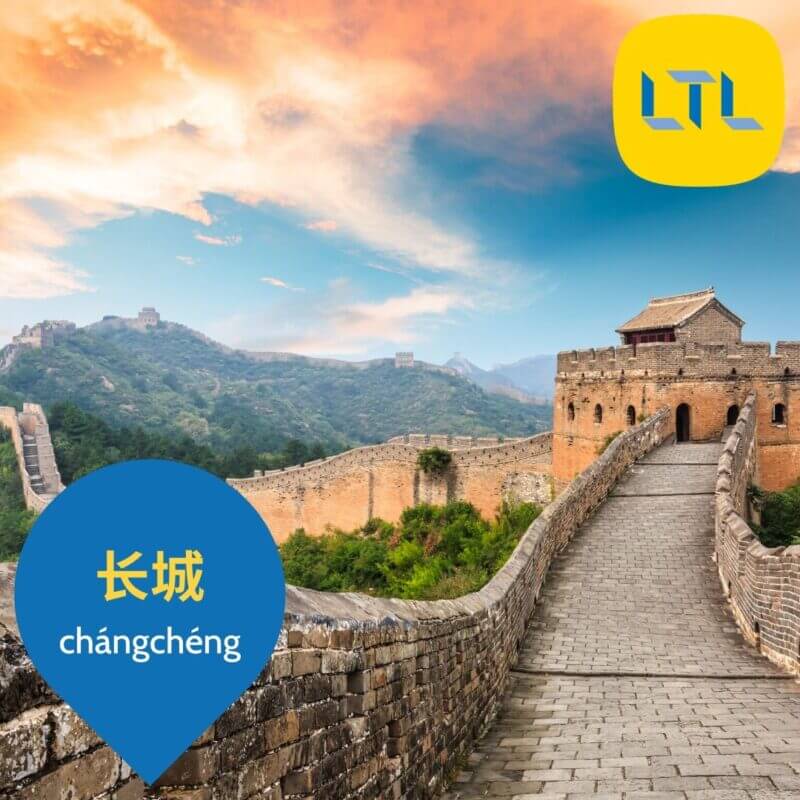
The first of our World Heritage Sites in China of course has to be the Great Wall.
Chinese name: 长城 chángchéng or 万里长城 wànlǐ chángchéng
Location: Northern China
Year listed: 1987
One of the “New 7 Wonders of the World” it’s no surprise that this is one of the first sites in China added to the World Heritage list.
Historians believe that the construction of the Great Wall began in 771 – 476 BC through to 221 – 206 BC when Emperor Qin Shi Huang came to power during the Qin dynasty.
The Great Wall is 21,196 km long and stretches all the way across from Hushan, Liaoning in the east to Jiayuguan Pass, Gansu in the west.
However, contrary to popular belief the Great Wall is not one long, continuous structure and is actually broken into different parts.

Great Wall of China Map | 10 Best Sections to Visit
Great Wall of China Map || 10 Best Sections to Visit The Great Wall of China is steeped in vast amounts of history and is one of the most interesting and diverse places to visit. It stretches across miles and…
Imperial Palaces of the Ming and Qing Dynasties
I’m sure that everyone will have heard of the Forbidden City which was the former palace of the Ming and Qing dynasties. However, you may not have heard of another former Qing dynasty palace: Mukden Palace.
Forbidden City
Chinese name: 故宫 gùgōng or 紫禁城 zǐjìnchéng
Location: Beijing
Year listed: 1987
In the heart of Beijing lies the iconic Forbidden City. Constructed from 1406 to 1420 the palace complex consists of 980 buildings!
It was the state residence of the emperors from the Ming and Qing dynasties between 1420 and 1924. The last emperor to live in the Forbidden City was Emperor Pu Yi, who was also the last emperor of China.
Mukden Palace (also known as Shenyang Imperial Palace)
Chinese name: 盛京宫殿 shèngjīng gōngdiàn, or 沈阳故宫 shěnyáng gùgōng
Location: Shenyang, Liaoning
Year listed: 2004
The lesser known Mukden Palace was the former imperial palace of the Manchu-led Qing Dynasty, with the first three Qing emperors living there (1625 – 1644).
The palace was built in 1625 to resemble the Forbidden City, with some added Manchu and Tibetan styles.
In 2004 the palace was added to the world heritage sites listing as an extension to the Forbidden City.
Historic Ensemble of the Potala Palace
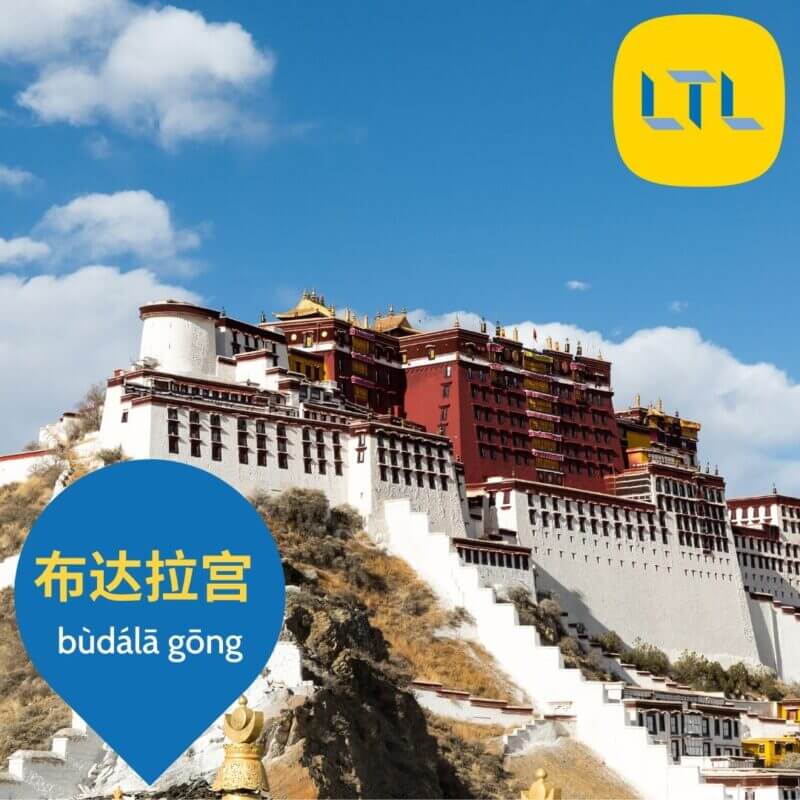
Chinese name: 布达拉宫 bùdálā gōng
Location: Lhasa, Tibet
Year listed: 1994
Construction of the Potala Palace was begun in 1645 by the 5th Dalai Lama.
It was the winter palace of Dalai Lamas from 1649 to 1959 and has been a museum since then.
The Potala Palace has thirteen storeys of buildings, with over 1,000 rooms, 10,000 shrines and about 200,000 statues!
In 2000 and 2001, Jokhang Temple and Norbulingka were added to the Potala Palace World Heritage Site listing as extensions to the site.
Chengde Mountain Resort and Outer Lying Temples
Following on from the Potala Palace, we have the Chengde Mountain Resort and Outer Lying Temples.
This actually includes a “mini” Potala Palace replica called Putuo Zongcheng Temple (普陀宗乘之庙 pǔtuó zōngchéng zhī miào)
As you can see from the photo below, at 220,000 square metres there isn’t really anything that “mini” about it!
Chinese name: 避暑山庄 bìshǔ shānzhuāng
Location: Chengde, Hebei
Year listed: 1994
The Chinese name for Chengde’s mountain resort literally translates to “Mountain Estate for Avoiding the Heat”. The Kangxi, Qianlong and Jiaqing emperors used to spend several months each summer here to escape the heat of summer in Beijing.
The resort was built during the Qing Dynasty, beginning in 1703 and took an insane 89 years to complete!
Included as part of this World Heritage Site listing are Chengde’s Eight Outer Temples, most of which have Tibetan style architecture.
Mausoleum of the First Qin Emperor
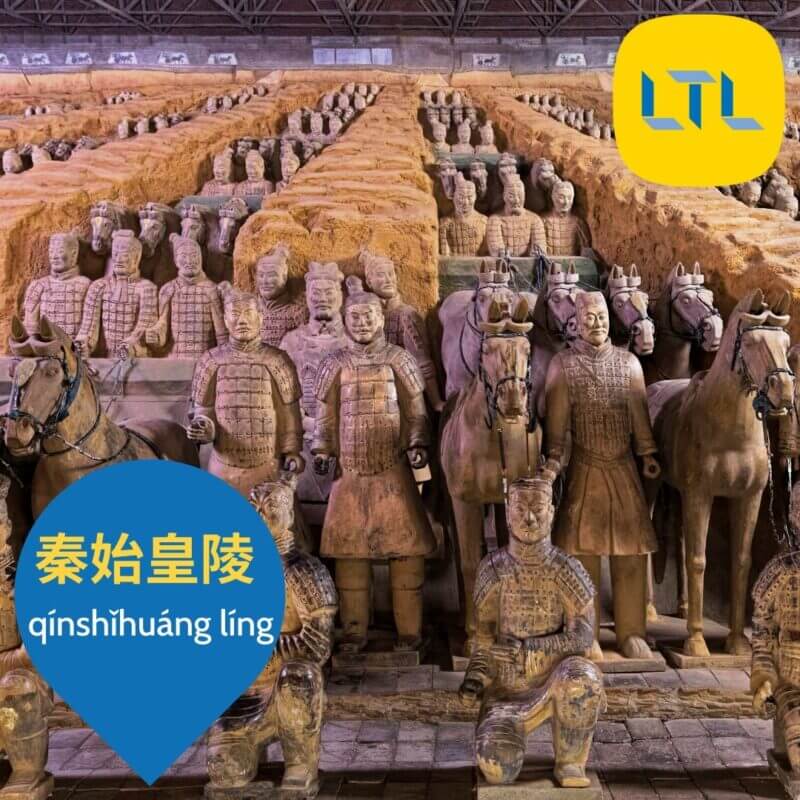
The Mausoleum of the first Qin Emperor is more well known as the location of the famous Terracotta Warriors (兵马俑 bīngmǎyǒng).
This is not only one of the must do things in Xi’an but, a must visit for all of China.
Chinese name: 秦始皇陵 qínshǐhuáng líng
Location: Xi’an, Shaanxi
Year listed: 1987
The mausoleum was constructed over 38 years, from 246 to 208 BC and the outer circumference is 6.3 km. The actual tomb of the mausoleum has not yet been excavated.
There are currently three separate pits of the Terracotta Warriors which have been excavated and are open to the public.
West Lake
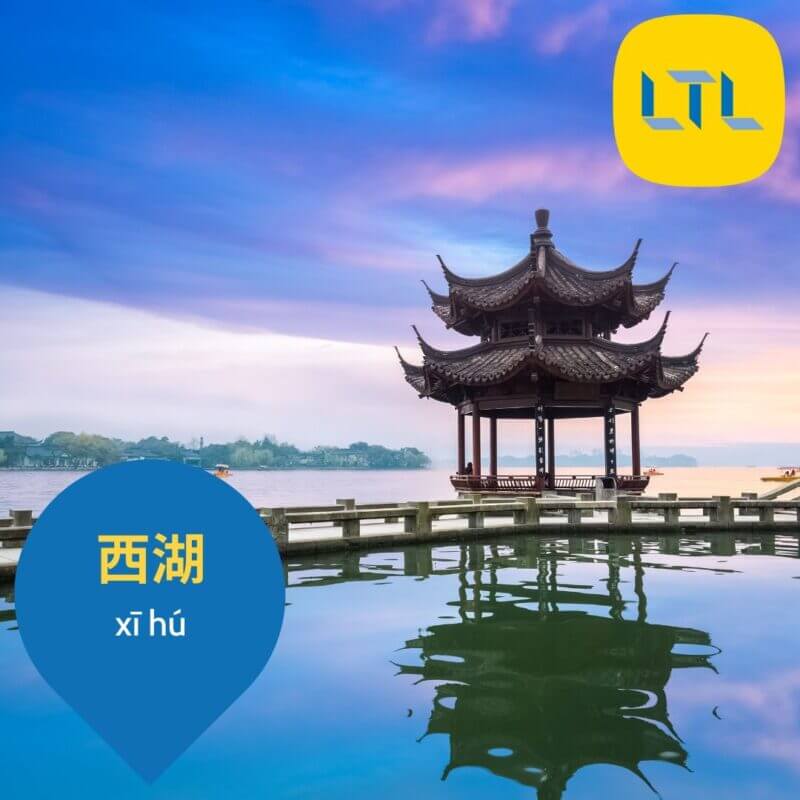
West Lake in Hangzhou is one of the most important sources of inspiration for traditional Chinese gardens.
When it was added to the UNESCO World Heritage list it was stated as having “influenced garden design in the rest of China as well as Japan and Korea over the centuries”.
Chinese name: 西湖 xī hú
Location: Hangzhou, Zhejiang
Year listed: 2011
West Lake has a surface area of 6.4 km squared with numerous temples, pagodas, gardens, and artificial islands.
It’s a truly breathtaking place and should definitely be added to your China bucket list!
Old Town of Lijiang

Chinese name: 丽江古城 lìjiāng gǔchéng
Location: Lijiang, Yunnan
Year listed: 1997
Lijiang Old Town is the historical centre of Lijiang City. The town has a history going back over 1,000 years.
It is famous for its ancient system of waterways and bridges.
The Old Town of Lijiang is made up of three parts: Dayan (大研 dà yán) Old Town and Baisha (白沙 báishā) and Shuhe (束河 shùhé) housing clusters. The main culture in Lijiang is that of the the Nakhi people (纳西族 nàxī zú), one of China’s 56 ethnic minorites.
If you’re in Beijing there is a great chain of restuarants that specialist in Lijiang cuisine.

Yunnan Food Guide – 10 Must Try Dishes For First Timers 🥘
Your Complete Guide to Eating Yunnan Food Although Yunnan food (云南菜 yúnnán cài) is not listed as one of the eight great Chinese cuisines, it is truly a delicious and unique style of Chinese food. Some fans have even dubbed…
Wutaishan

Wutaishan is one of Four Sacred Buddhist Mountains of China.
Wutaishan was the first of the four to be identified and therefore is often referred to as “first among the four great mountains”.
Chinese name: 五台山 wǔtáishān
Location: Wutai County, Shanxi
Year listed: 2009
Wutaishan has a lot of cultural and historical significance being home to some of the oldest wooden buildings in China that have survived since the era of the Tang Dynasty (618–907).
It is also host to over 53 sacred monasteries, many of which are some of China’s most important monasteries and temples.
World Heritage Sites in China – Natural 🌄
Jiuzhaigou Valley Scenic and Historic Interest Area
The Jiuzhaigou valley has to be one of the most breathtaking spots in all of China.
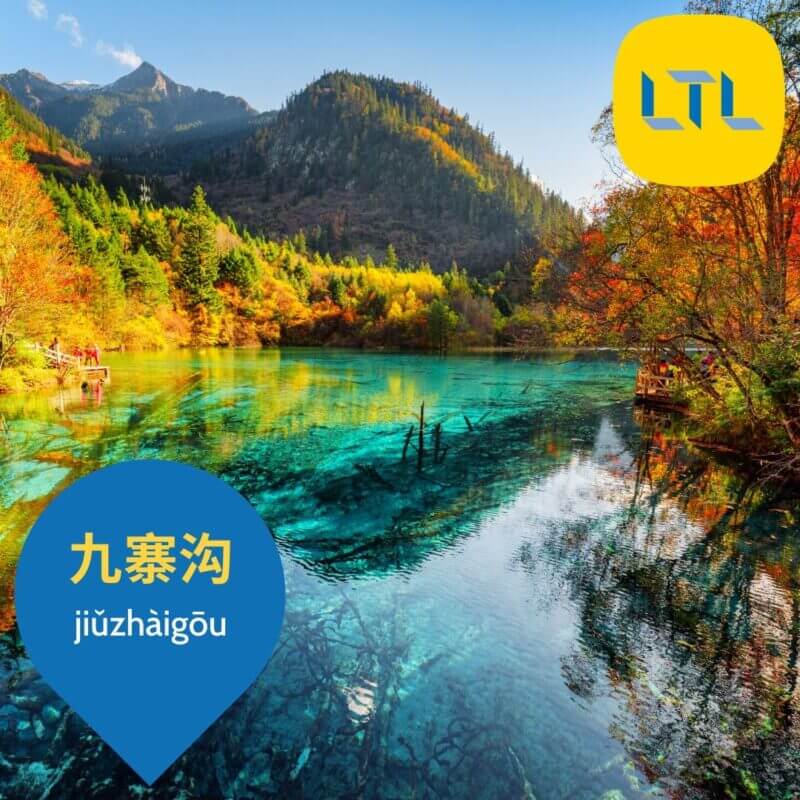
One look at its beautiful, clear lakes and it’s no surprise why it’s a UNESCO World Heritage Site.
It is part of the Min Mountains (岷山 mín shān) on the edge of the Tibetan Plateau.
Chinese name: 九寨沟 jiǔzhàigōu
Location: Jiuzhaigou County, Sichuan
Year listed: 1992
The area stretches out over 180,000 acres and was turned into a national park in 1982.
The Jiuzhaigou valley officially opened up to tourists in 1984, and in recent years has become a hugely popular destination.
Wulingyuan
China is full of unique natural sites, that you’ll have a hard time believing are real.
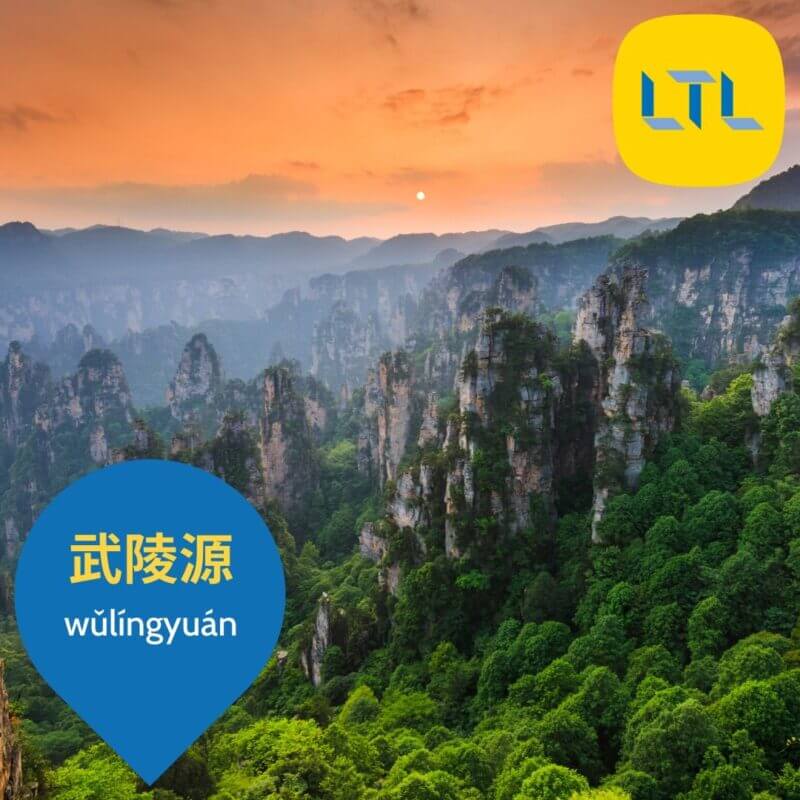
Wulingyuan is definitely one of these, with its sandstone pillars creating a landscape that looks out of this world.
In fact, this landscape actually inspired the mountains shown in the blockbuster film Avatar, with the mountains now commonly being referred to by foreign tourists as the “Avatar Mountains”.
Chinese name: 武陵源 wǔlíngyuán
Location: Zhangjiajie, Hunan
Year listed: 1992
The area is made up of four national parks, with the most famous probably being Zhangjiajie National Forest Park.
The area is part of the Wuling Mountain Range (武陵山脉 wǔlíng shānmài) and covers 690 square kilometres.
Fanjingshan
Following on from Wulingyuan, we have another site that is part of the Wuling Mountains, Fanjingshan (also known as Mount Fanjing). It is the highest peak of the mountains at an elevation of 2,570 m.
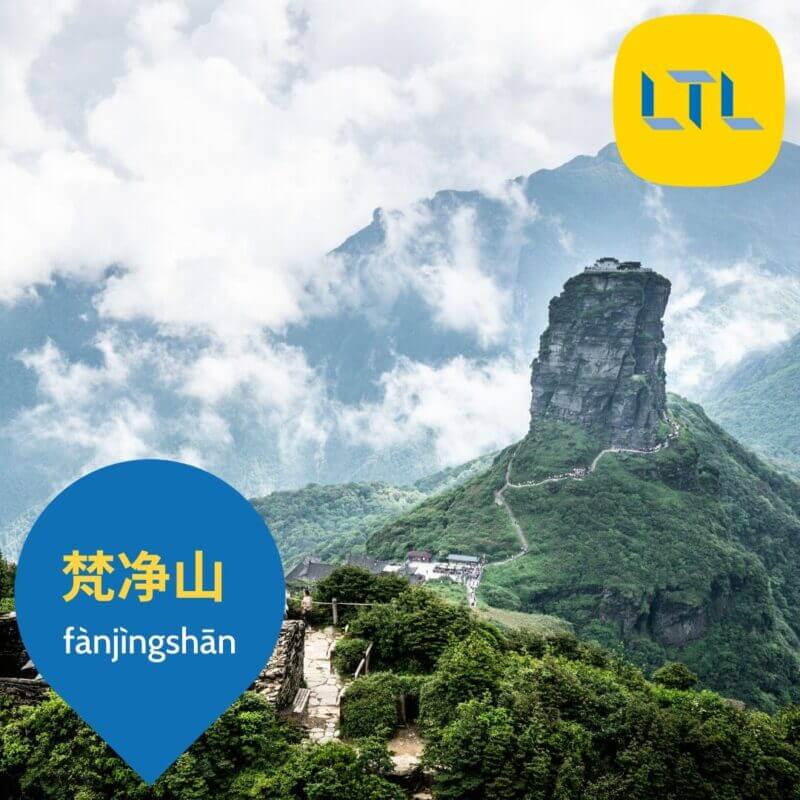
Chinese name: 梵净山 fànjìngshān
Location: Tongren, Guizhou
Year listed: 2018
This is the newest addition to our list of World Heritage Sites in China, however not the newest on the full list, with two additions being added in 2019.
Fanjingshan is a sacred mountain of Chinese Buddhism.
The name Fanjing is short for 梵天净土 (fàntiān jìngtǔ) fantian is the Chinese name for Brahmā, and jingtu is Chinese for “pure land”, so it’s name literally means “Brahma’s Pure Land”.
Sichuan Giant Panda Sanctuaries
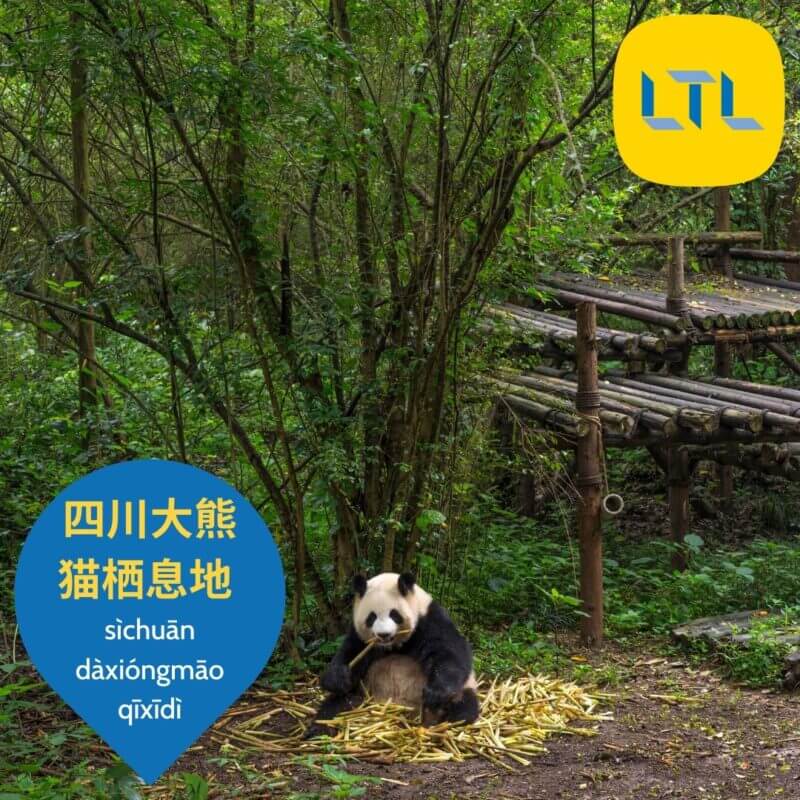
Home to China’s “national treasure” the panda (大熊猫 dà xióngmāo), it’s no wonder that these giant panda sanctuaries are a World Heritage Site.
Chinese name: 四川大熊猫栖息地 sìchuān dàxióngmāo qīxīdì
Location: Sichuan
Year listed: 2006
Included in the listing are seven nature reserves and nine scenic parks. If you’re wondering about which area to visit, be sure to check out our guide to pandas in Chengdu.
The Sichuan Giant Panda Sanctuaries are home to over 30% of the world’s giant pandas and are vitally important for captive breeding of these pandas.
World Heritage Sites in China – Cultural and Natural 🏯🌄
Huangshan
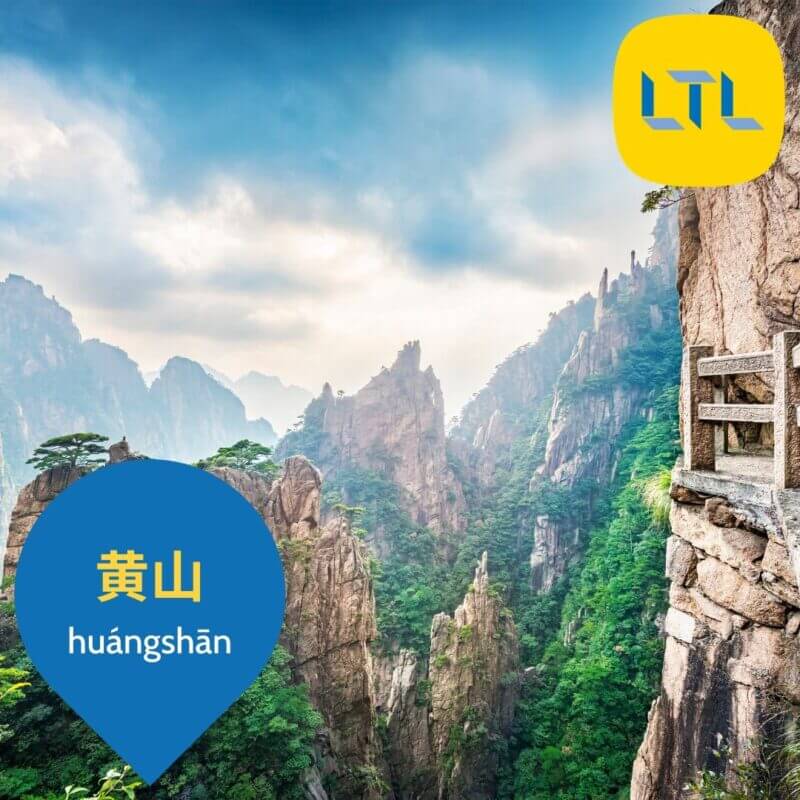
Chinese name: 黄山 huángshān
Location: Huangshan City, Anhui
Year listed: 1990
Huangshan, or literally “Yellow Mountain” as it is also known, is one of the top tourist destination spots in China.
The mountain has a lot of cultural significance in China, being the subject of many traditional Chinese paintings and literature. Originally it was called Yishan, but it’s name was changed to Hunagshan in 747 AD.
Most historians believe the mountain was renamed in honour of Huang Di (黄帝 huángdì) also known as the Yellow Emperor, a legendary Chinese emperor and the mythological ancestor of the Han Chinese. There is even one legend that claims the Yellow Emperor ascended to heaven from Huangshan.
Emeishan Scenic Area (including Leshan Giant Buddha)
Emeishan is another one of the Four Sacred Buddhist Mountains of China. Out of the four, two of them are listed as World Heritage Sites in China: Emeishan and Wutaishan (which we talked about earlier).
Chinese name: 峨眉山 éméishān 乐山大佛 lèshān dàfó (giant buddha)
Location: Emeishan City, Sichuan
Year listed: 1996
On the summit of Emeishan is the first Buddhist temple built in China which was built in the 1st century CE.
Emeishan Scencic Area is also famous for the Leshan Giant Buddha. The Buddha is the largest in the world at 71-metres and was built between 713 and 803 (during the Tang Dynasty).
It is carved out of a cliff face facing Emeishan, with the confluence of the Min River and Dadu River at its feet.
Why not read about Daniel’s story of hiking Emeishan?
Taishan
Taishan is known as the eastern mountain of the Five Great Mountains of China.

Not to be confused with the Four Sacred Buddhist Mountains, yes China has a lot of different famous mountains!
Chinese name: 泰山 tài shān
Location: Tai’an, Shandong
Year listed: 1987
Taishan has been a place of worship for at least 3,000 years, beginning with the Shan Dynasty (c. 1600–1046 BC).
During this time is was one of the most important ceremonial centres of China with many emperors holding sacrifices there.
World Heritage Sites in China – Full List
| Site | Year Listed | Location |
|---|---|---|
| The Great Wall | 1987 | Northern China |
| Imperial Palaces of the Ming and Qing Dynasties | 1987, 2004 | Beijing, Shenyang |
| Mausoleum of the First Qin Emperor | 1987 | Xi’an, Shaanxi |
| Taishan | 1987 | Tai’an, Shandong |
| Peking Man Site at Zhoukoudian | 1987 | Beijing |
| Mogao Grottoes | 1987 | Dunhuang, Gansu |
| Huangshan | 1990 | Huangshan, Anhui |
| Jiuzhaigou Valley Scenic and Historic Interest Area | 1992 | Jiuzhaigou, Sichuan |
| Wulingyuan Scenic and Historic Interest Area | 1992 | Zhangjiajie, Hunan |
| Huanglong Scenic and Historic Interest Area | 1992 | Huanglong, Sichuan |
| Historic Ensemble of the Potala Palace | 1994, 2000, 2001 | Lhasa, Tibet |
| Temple and Cemetery of Confucius and the Kong Family Mansion | 1994 | Qufu, Shandong |
| Ancient Building Complex in the Wudang Mountains | 1994 | Shiyan, Hubei |
| Chengde Mountain Resort and its Outlying Temples | 1994 | Chengde, Hebei |
| Mount Emei Scenic Area | 1996 | Leshan, Sichuan |
| Lushan National Park | 1996 | Jiujiang, Jiangxi |
| Old Town of Lijiang | 1997 | Lijiang, Yunan |
| Ancient City of Pingyao | 1997 | Jinzhong, Shanxi |
| Classic Gardens of Suzhou | 1997, 2000 | Suzhou, Jiangsu |
| Summer Palace | 1998 | Beijing |
| Temple of Heaven | 1998 | Beijing |
| Dazu Rock Carvings | 1999 | Chongqing |
| Mount Wuyi | 1999 | Wuyishan, Fujian |
| Imperial Tombs of the Ming and Qing Dynasties | 2000, 2003, 2004 | Jiangsu, Beijing, Liaoning, Hubei, Hebei |
| Ancient Villages in Southern Anhui | 2000 | Yi County, Anhui |
| Mount Qingcheng and Dujiangyan Irrigation Project | 2000 | Dujiangyan, Sichuan |
| Longmen Grottoes | 2000 | Luoyang, Henan |
| Yungang Grottoes | 2001 | Datong, Shanxi |
| Three Parallel Rivers of Yunnan Protected Areas | 2003 | Yunnan |
| Capital Cities and Tombs of the Ancient Koguryo Kingdom | 2004 | Huanren County, Liaoning Province and Ji’an, Jilin Province |
| Historic Centre of Macau | 2005 | Macau |
| Sichuan Giant Panda Sanctuaries | 2006 | Sichuan |
| Yin Xu | 2006 | Anyang, Henan |
| South China Karst | 2007,2014 | Guizhou, Guangxi, Yunnan, Chongqing |
| Kaiping Diaolou and Villages | 2007 | Jiangmen, Guangdong |
| Mount Sanqingshan National Park | 2008 | Shangrao, Jiangxi |
| Fujian Tulou | 2008 | Fujian |
| Wutai Mountain | 2009 | Xinzhou, Shanxi |
| China Danxia | 2010 | Guizhou, Fujian, Hunan, Guangdong, Jiangxi, Zhejiang |
| Historic Monuments of Dengfeng in “The Centre of Heaven and Earth” | 2010 | Dengfeng, Henan |
| West Lake | 2011 | Hangzhou, Zhejiang |
| The Site of Xanadu | 2012 | Xilingol, Inner Mongolia |
| Chengjiang Fossil Site | 2012 | Yunnan |
| Cultural Landscape of Honghe Hani Rice Terraces | 2013 | Yunnan |
| Xinjiang Tianshan | 2013 | Xinjiang |
| Silk Roads: the Routes Network of Chang’an-Tianshan Corridor | 2014 | Gansu, Shaanxi, Ningxia, Qinghai, Xinjiang |
| The Grand Canal | 2014 | Beijing, Hangzhou |
| Tusi Sites | 2015 | Hubei |
| Zuojiang Huashan Rock Art Cultural Landscape | 2016 | Guangxi |
| Hubei Shennongjia | 2016 | Hubei |
| Kulangsu: a Historic International Settlement | 2017 | Xiamen, Fujian |
| Qinghai Hoh Xil | 2017 | Qinghai |
| Fanjingshan | 2018 | Tongren, Guizhou |
| Archaeological Ruins of Liangzhu City | 2019 | Hangzhou and Deqing County |
| Migratory Bird Sanctuaries along the Coast of Yellow Sea-Bohai Gulf of China | 2019 | Yancheng, Jiangsu |
World Heritage Sites in China – FAQ’s
How many World Heritage Sites are there in China?
There are 55 World Heritage Sites in China.
Does China have the most World Heritage Sites in the world?
China is tied for the most World Heritage Sites in the world with Italy, both of them have 55.
Is the Great Wall of China a UNESCO World Heritage Site?
Yes, the Great Wall of China is a UNESCO World Heritage Site.
Is Hangzhou a World Heritage Site?
Hangzhou itself is not a World Heritage Site, but the West Lake in Hangzhou is.
Is the Forbidden City a World Heritage Site?
Yes, the Forbidden City is a World Heritage Site.
Want more from LTL?
If you wish to hear more from LTL Mandarin School why not join our mailing list?
We give plenty of handy information on learning Chinese, useful apps to learn the language and everything going on at our LTL schools.
Sign up below and become part of our ever-growing community.
BONUS | Learn Chinese with LTL in person. Our student community is growing by the week.

 Hi, my name is Ilaria! I am from Italy and I am a Student Advisor at LTL. Fancy coming to study with us in China? Drop me a message.
Hi, my name is Ilaria! I am from Italy and I am a Student Advisor at LTL. Fancy coming to study with us in China? Drop me a message.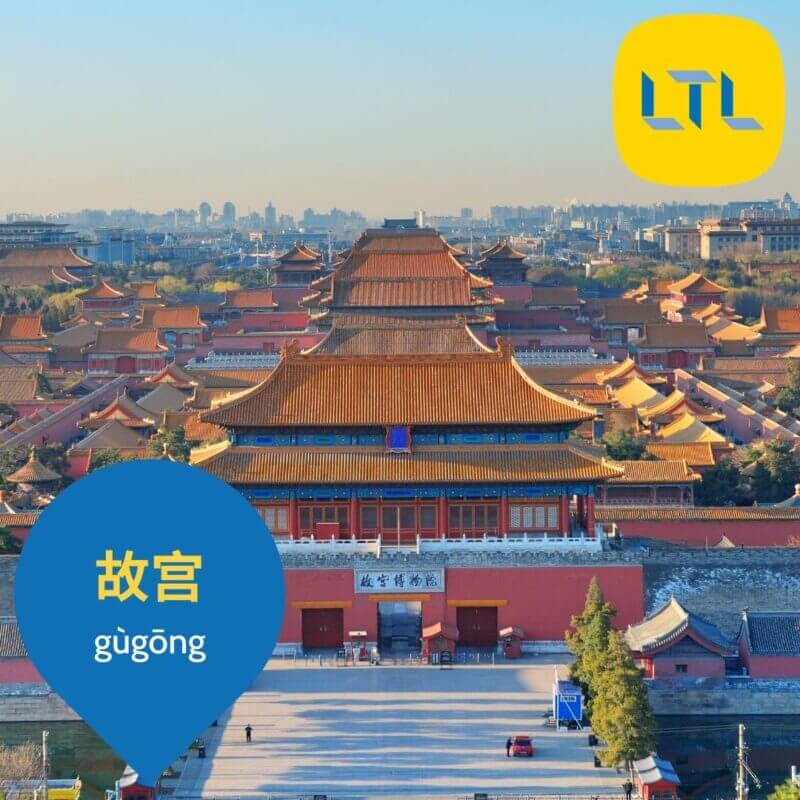
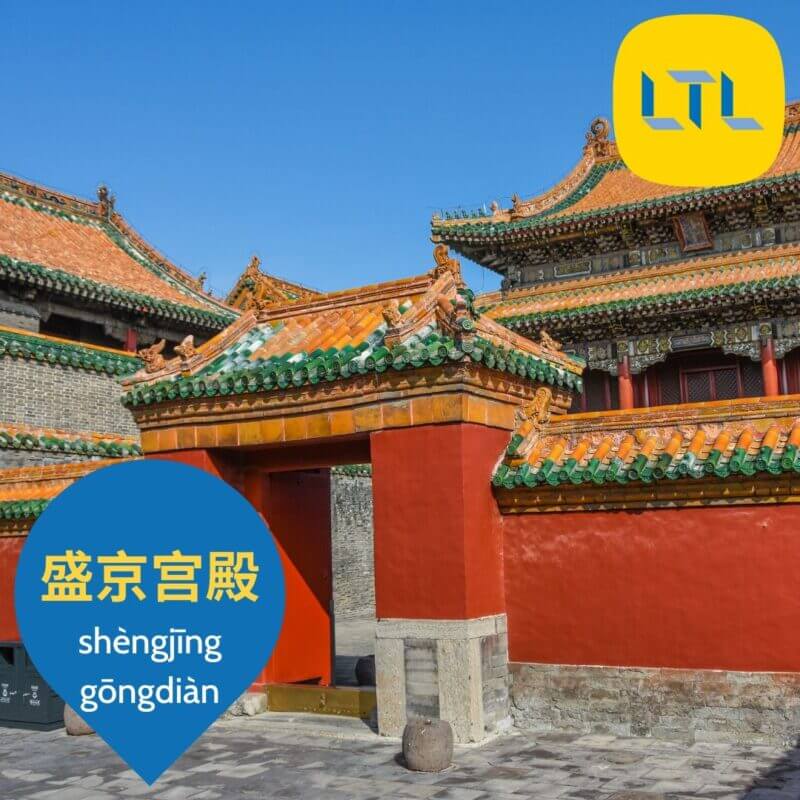
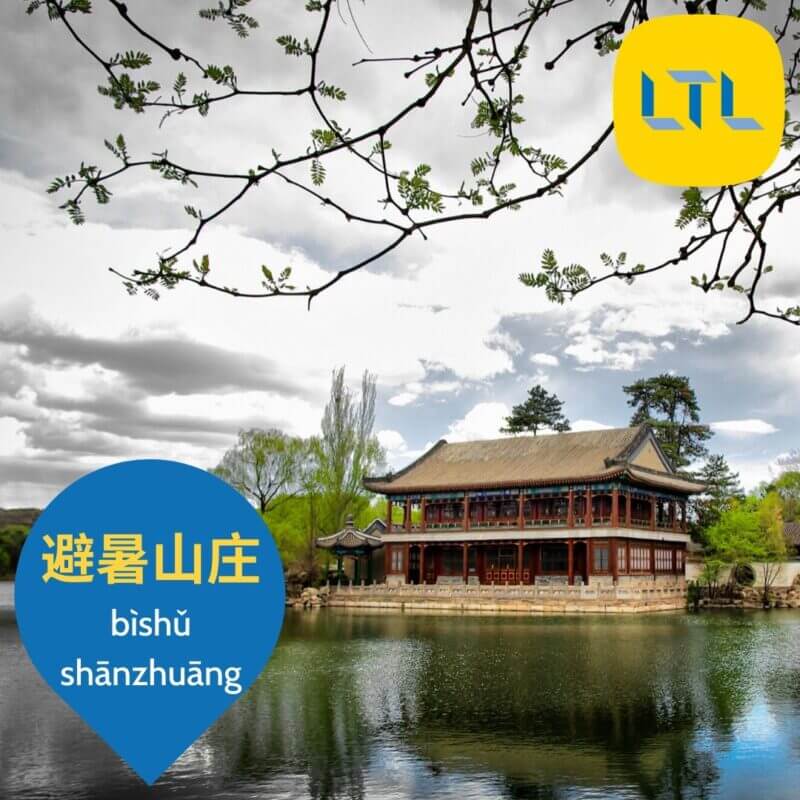
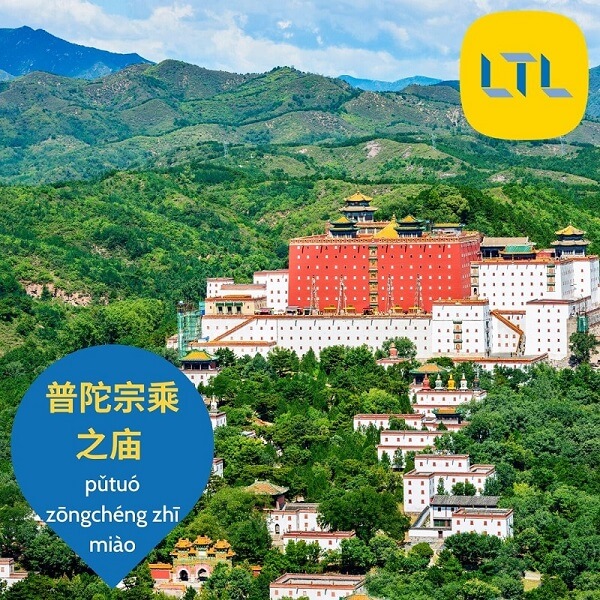
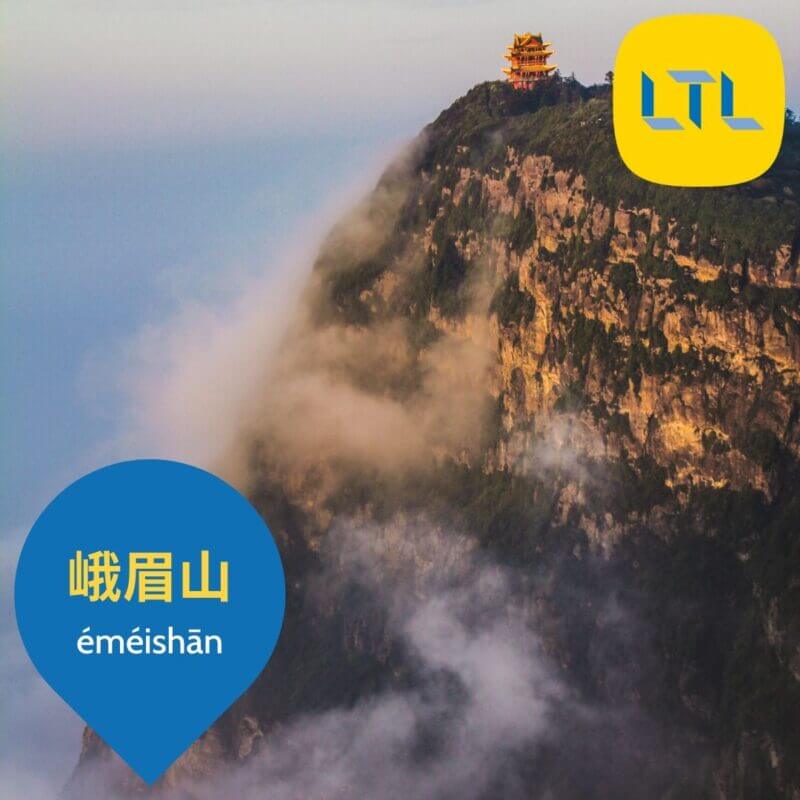


3 comments
[…] of China’s 55 World Heritage Sites, it is an amazing sight to […]
Wow, mindblowing places!
Oh China has so much people never knew about!